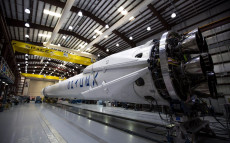- pathfindersAI
- Job Profile
Aerospace Engineers
Summary
Aerospace Engineers: Architects of the Skies
What They Do
Aerospace Engineers are the masterminds behind the design, construction, and testing of aircraft, spacecraft, and missiles. They work tirelessly to push the boundaries of aerodynamics, propulsion, avionics, and materials science. These professionals are essential in advancing both commercial and defense aviation sectors, ensuring that human aspirations to explore the skies and beyond remain unbounded. Their fingerprints are evident on everything from commercial airplanes that achieve fuel efficiency to space probes that explore the furthest reaches of our solar system.
Job Responsibilities
The scope of responsibilities for Aerospace Engineers is as vast as the sky. They start by conducting research to determine the feasibility, design, and performance of new aerospace technologies. This preliminary phase involves extensive computer simulations and theoretical calculations. Once the conceptual groundwork has been laid, Aerospace Engineers work on the actual design, often using sophisticated CAD software. Testing follows design and involves prototypes and rigorous simulation to ensure compliance with safety and performance standards. Finally, the implementation phase sees them overseeing the manufacturing processes, ensuring quality control, and making necessary adjustments based on performance data.
Essential Skills
To navigate the complex world of aerospace engineering, a robust toolkit of skills is indispensable. Proficiency in mathematics and physics forms the foundation, enabling engineers to solve complex problems related to fluid dynamics and material strength. Technical skills in computer-aided design (CAD) and programming are becoming increasingly essential. Additionally, strong analytical capabilities allow engineers to interpret vast amounts of data, while project management skills ensure that large, multifaceted projects are completed on time and within budget. Soft skills, such as effective communication and teamwork, are also crucial, given the collaborative nature of engineering projects.
Educational Pathways
A successful career in aerospace engineering begins with a strong educational foundation. Most professionals in this field have a Bachelor’s degree in Aerospace Engineering or a related discipline such as Mechanical Engineering. These programs typically cover core subjects like thermodynamics, aerodynamics, and propulsion systems. For those seeking advanced positions or specialized roles, a Master’s or Doctoral degree can provide a competitive edge. Internships and cooperative education programs offer invaluable hands-on experience, often serving as gateways to full-time employment. Certification and continuous education, such as obtaining a Professional Engineer (PE) license, further enhance career prospects.
Career Prospects
The career prospects for Aerospace Engineers are as boundless as the sky itself. Entry-level positions often involve assisting experienced engineers in design, analysis, and testing processes. With experience, Aerospace Engineers can progress to roles such as project managers, where they oversee large-scale projects from conception to completion. Some may choose to specialize in areas like avionics or propulsion. Emerging fields like unmanned aerial vehicles (UAVs) and commercial space travel offer exciting new opportunities. Additionally, the demand for eco-friendly aviation solutions is creating a niche for engineers passionate about sustainability. With the right blend of education and experience, the sky is not the limit, but just the beginning.
Conclusion
In conclusion, Aerospace Engineers are the architects of our aerial and space-bound future. They play a pivotal role in innovation, safety, and efficiency in the aerospace sector. By mastering a wide array of technical and soft skills, and following a rigorous educational pathway, aspiring engineers can look forward to a rewarding and dynamic career. For those with a passion for flight and a dream to reach the stars, aerospace engineering offers a career that is truly out of this world.
Video
Compensation
| State | Median Salary | Median Hourly | Positions |
|---|---|---|---|
| AL | 130,870 | 62.92 | 4,950 |
| AK | 95,420 | 45.88 | 130 |
| AZ | 128,230 | 61.65 | 1,750 |
| AR | * | * | 40 |
| CA | 130,720 | 62.85 | 11,130 |
| CO | 135,280 | 65.04 | 3,760 |
| CT | 103,440 | 49.73 | 1,250 |
| DE | 126,030 | 60.59 | 40 |
| DC | 166,310 | 79.96 | 410 |
| FL | 121,470 | 58.40 | 3,230 |
| GA | 131,490 | 63.22 | 3,060 |
| HI | 126,340 | 60.74 | 30 |
| IL | 116,520 | 56.02 | 670 |
| IN | 123,090 | 59.18 | 420 |
| KS | 107,550 | 51.71 | 2,150 |
| KY | 107,730 | 51.79 | 240 |
| LA | 109,510 | 52.65 | 150 |
| ME | 138,980 | 66.82 | 140 |
| MD | 145,600 | 70.00 | 2,810 |
| MA | 136,860 | 65.80 | 750 |
| MI | 108,100 | 51.97 | 330 |
| MN | 140,320 | 67.46 | 250 |
| MS | 90,420 | 43.47 | 120 |
| NE | 131,870 | 63.40 | 60 |
| NV | 85,440 | 41.08 | 380 |
| NJ | 129,950 | 62.47 | 1,130 |
| NY | 102,930 | 49.49 | 460 |
| NC | 120,270 | 57.82 | 740 |
| OH | 130,740 | 62.85 | 3,540 |
| OK | 104,380 | 50.18 | 1,420 |
| OR | 101,310 | 48.71 | 320 |
| PA | 121,120 | 58.23 | 750 |
| SC | 130,780 | 62.88 | 560 |
| TN | 118,930 | 57.18 | 390 |
| TX | 127,870 | 61.48 | 6,250 |
| UT | 127,760 | 61.42 | 1,080 |
| VA | 137,540 | 66.13 | 2,550 |
| WA | 142,520 | 68.52 | 5,430 |
| WI | 87,160 | 41.90 | 80 |
Similar Occupations
In this area you will find other occupations that are close to the one you were viewing in tasks, knowledge and work environment. If the primary job profile you are viewing isn't quite to your liking, take a look around and see what else is available.
Basic and Premium Accounts have more alternative occupations available than the Free account.

Aerospace Engineering and Operations Technologists and Technicians - 17-3021.00
Aerospace Engineering and Operations Technologists and Technicians assist in the design, testing, and maintenance of aircraft, spacecraft, and related systems and equipment. They utilize technical skills and advanced tools to ensure the functionality, safety, and efficiency of aerospace technologies and operations.
-
$77,830/yr
Median Pay -
10,640
Number of Jobs

Aircraft Mechanics and Service Technicians - 49-3011.00
Aircraft Mechanics and Service Technicians are responsible for diagnosing, repairing, and maintaining the structural, mechanical, and electronic systems of airplanes and helicopters to ensure they operate safely and efficiently. They perform routine inspections, troubleshoot issues, and replace or repair components to meet stringent safety standards and regulatory requirements.
-
$75,020/yr
Median Pay -
137,630
Number of Jobs